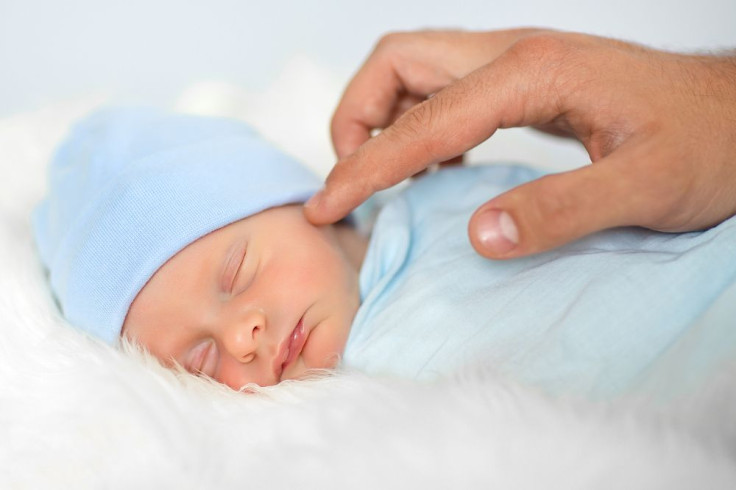'Pleasant Touch' Between Parent And Infant Fosters Social, Physical Development

Almost all parents see it within the first few days of their child’s birth. A gentle touch or a light caress, deemed “pleasant touch,” stimulates their baby’s senses, and induces a response indicative of parent-child bonding. New research into the matter now finds that these interactions are not only important for bonding, but that they also build on the child’s social and physiological development.
“Our results provide physiological and behavioral evidence that sensitivity to pleasant touch emerges early in development and therefore plays an important role in regulating human social interactions,” the researchers wrote. The findings are important because they show that the implicit meaning of pleasant touch — to stimulate bonding — develops as early as infancy. In turn, these social interactions carry on into adulthood, as many adults lightly caress, or pet, their partner to express love and affection.
The researchers, from the Max Planck Institute for Human Cognitive and Brain Sciences in Leipzig, Germany, found that it takes a very specific type of stroke to induce this bonding feeling. One that’s too fast or too slow doesn’t necessarily activate the socially and physical developing areas of the brain at the same time. With the right speed and softness, the touch can show babies how touch is associated with emotional bonding.
To show this, they had a group of parents sit with their children on their laps. Experimenters would go around stoking the babies’ arms with a paintbrush, changing the rate at which they moved the brush back and forth. Their strokes took on three different speeds, defined as 0.3, three, or 30 centimeters per second. While they stroked the back of the babies’ arms, they noted responses with physiological and behavioral measures.
The most engaging response came with the medium-velocity strokes, the researchers found. These strokes not only lowered the children’s heart rate, but also caused them to become more curious about the brush as it stroked them. Further strengthening the relationship between pleasant touch and parent-child bonding, the researchers found that parents whose self-reported sensitivity to touch was higher were more likely to have children who responded more to the pleasant touch of the paintbrush.
“One possibility is that infants’ sensitivity to pleasant touch stems from direct of vicarious experience of differing levels of social touch as a function of their caregiver’s sensitivity to social touch,” said cognitive neuroscientists Merle Fairhurst, of the Institute, in a statement. “Another possibility is that social touch is genetically heritable and therefore correlated between caregivers and infants.”
Regardless, the study only supports the importance of touch between caregiver and infant. Children who lack this kind of interaction — often those who end up in foster homes or orphanages — tend to have increased levels of the stress hormone cortisol as they grow older, Scientific American reported. This lack of affection can result in a child who develops emotional, behavioral, and social problems later on in life. Along these same lines, the researchers plan to look into how the brain reacts to these pleasant touches with the help of neuroimaging tools, and subsequently, how touch affects their psychology and future social function.
Source: Fairhurst M, Line L, Grossmann T. Physiological and Behavioral Responses Reveal 9-Month-Old Infants’ Sensitivity to Pleasant Touch. Psychological Science. 2014.



























